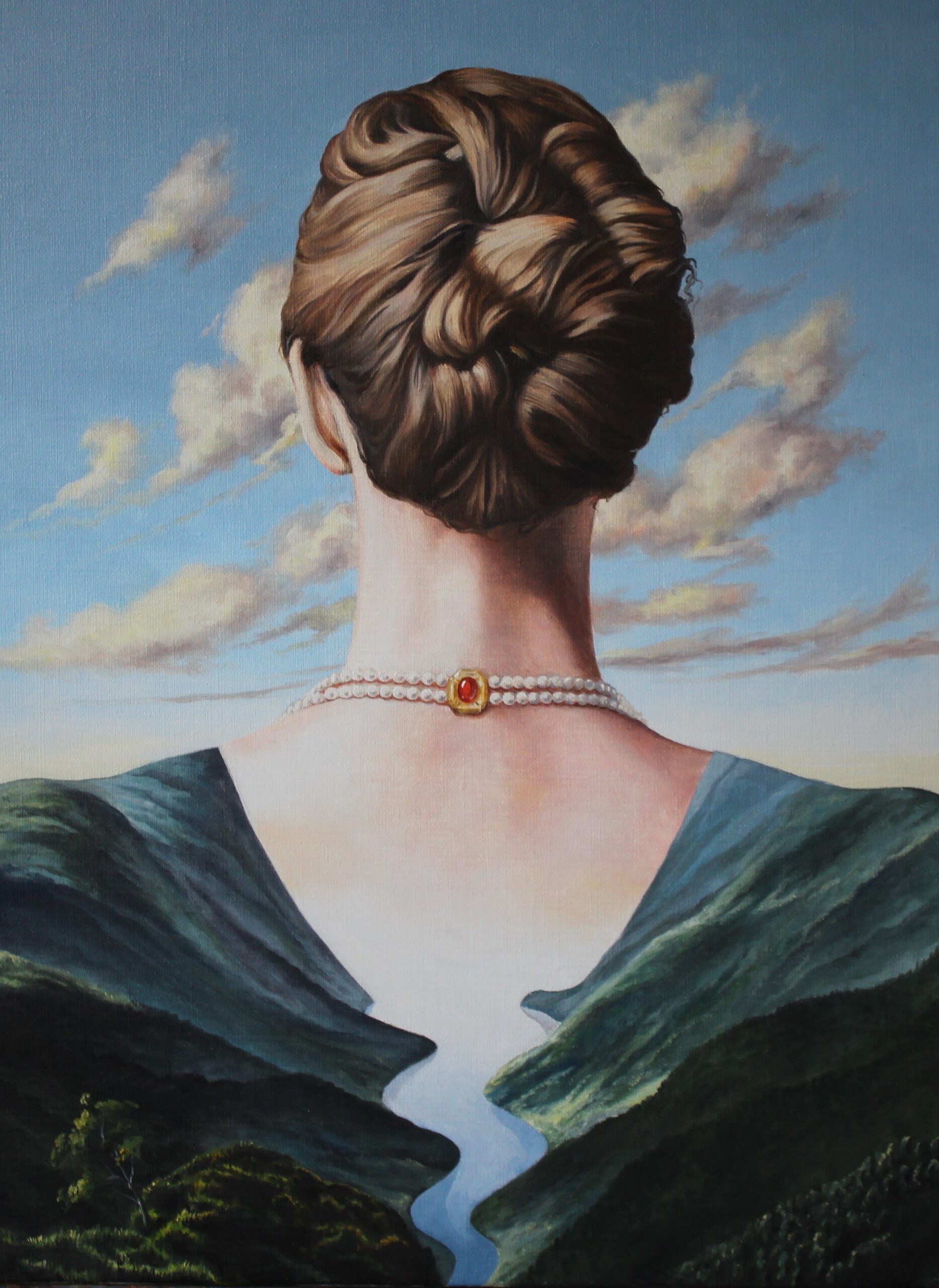Frank Björklund
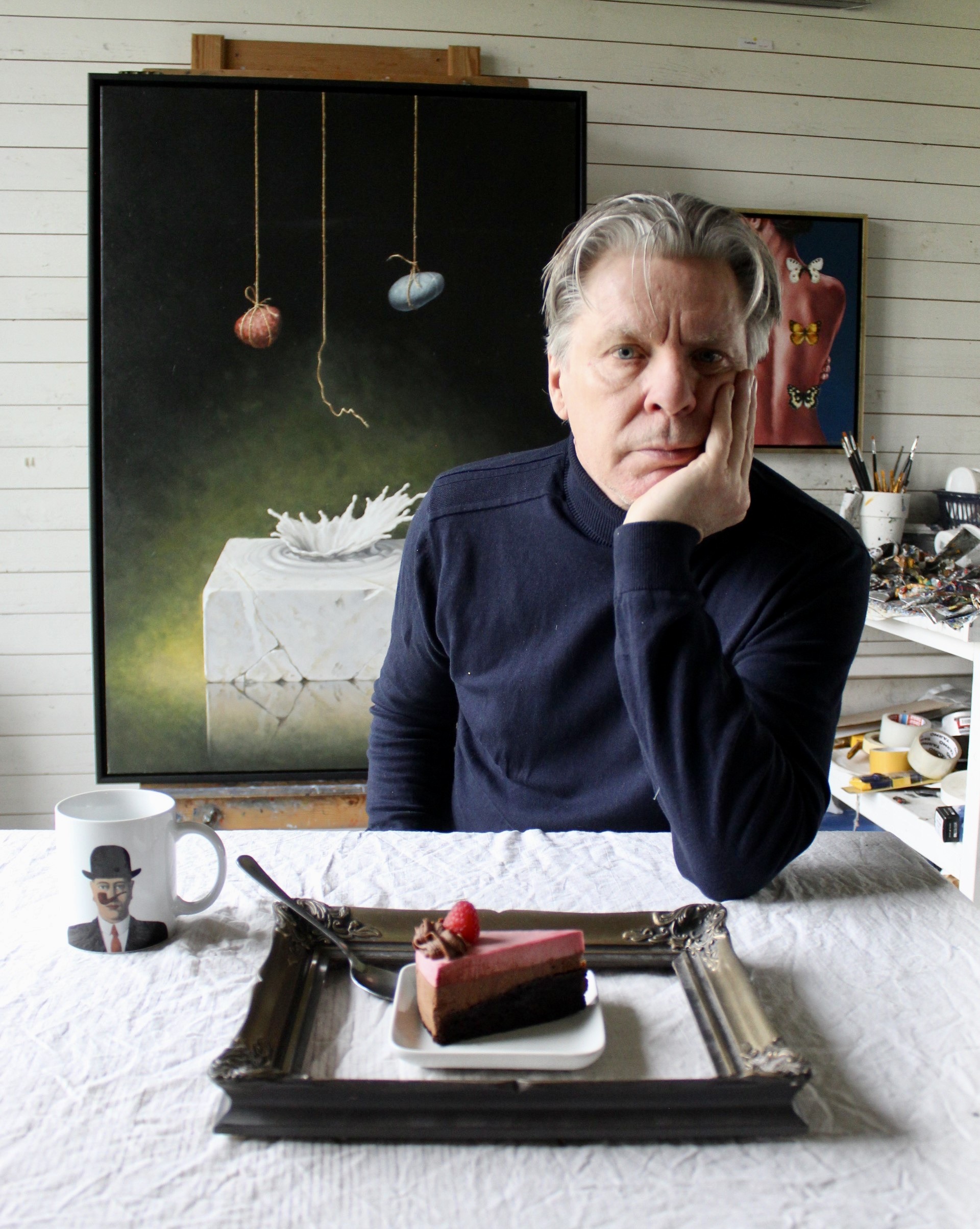
Frank makes a point of letting me know, that he has no website and doesn’t do any of the social media networks, his wife Anna runs his facebook page, and his work appears on various international gallery websites around the world. It’s hard not to notice his work as a modern surrealist painter, his work exaggerates or emphasises concepts with comedic caricature somewhat reminiscent of the similar animations of the fantastical and magic, as well as all the hypotheses and speculations that he has on philosophy and politics. A luminescent red rhino in the middle of the room, an angelic baby floating on the city street of New York. Frank’s illustrative puzzles, make the familiar contentious and obscure, questions emerge about the representation and reality. His inspirations Dali and Rene Magritte, however with his own take on the surrealism and chaos befitting the 2000s, with all his humour and metaphors in almost a cartoonish visceral of our anxieties in the last 20 years or more with the takeover of a world run by cyberspace as we walk through life today with our noses in our phones or filming and taking photos of everything in our daily lives. We discuss the narratives behind his work, and Frank explains how they are very important, that is where his inspirations come from, the books he reads, the music he listens to, the inspirations of his childhood and the freedoms around his environment. He paints with photorealism, however, it’s the surrealist elements in his work that matter to him.
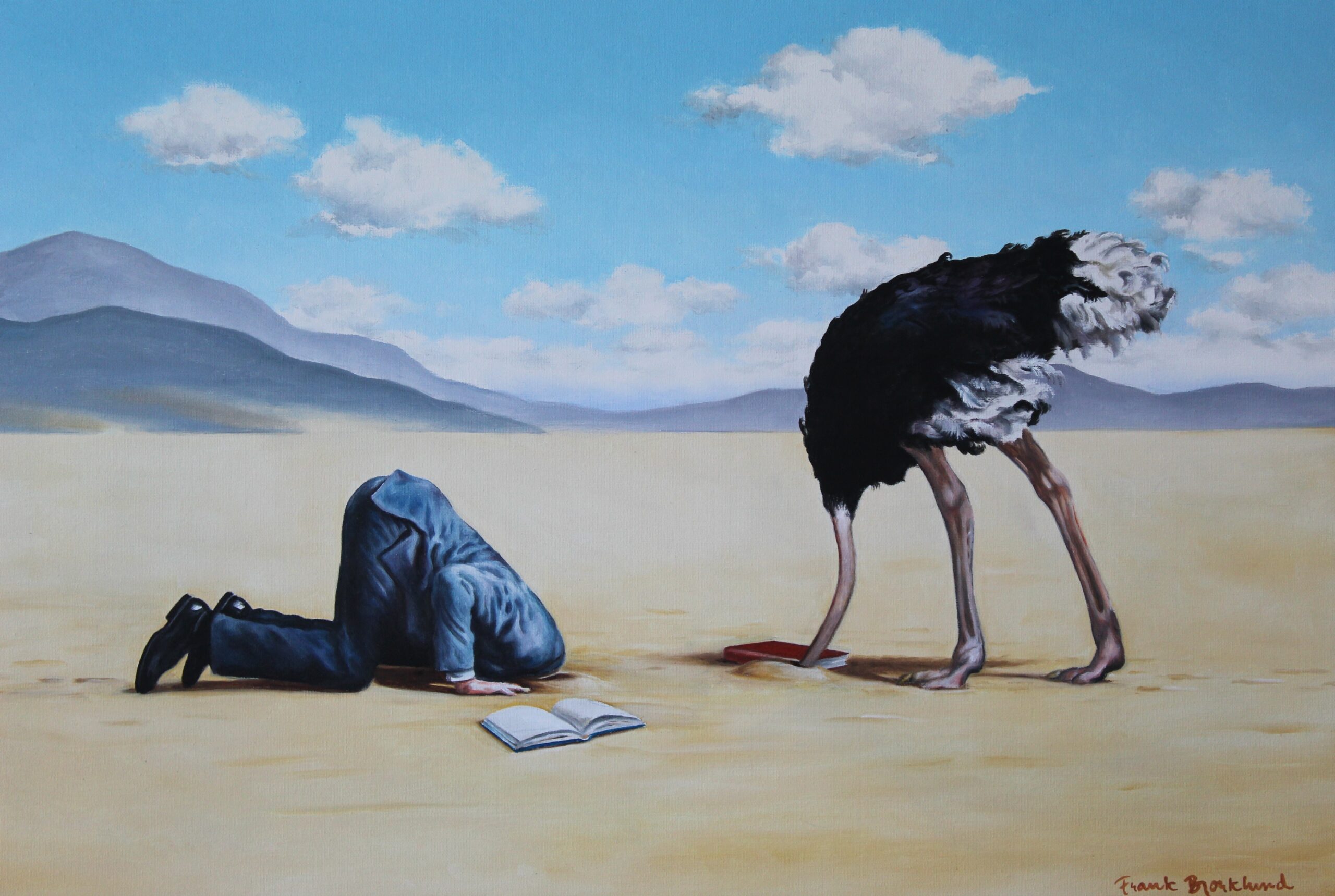
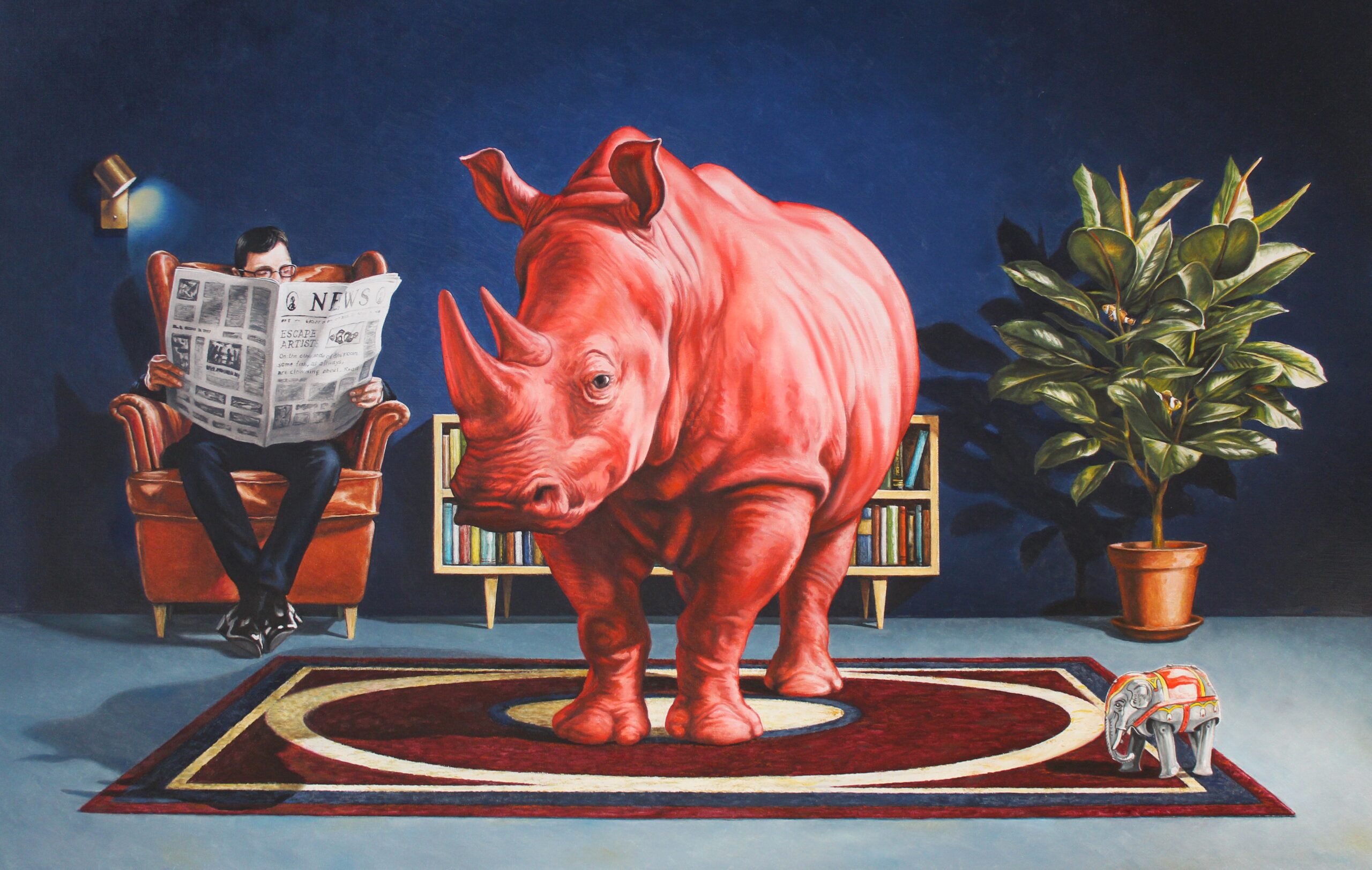
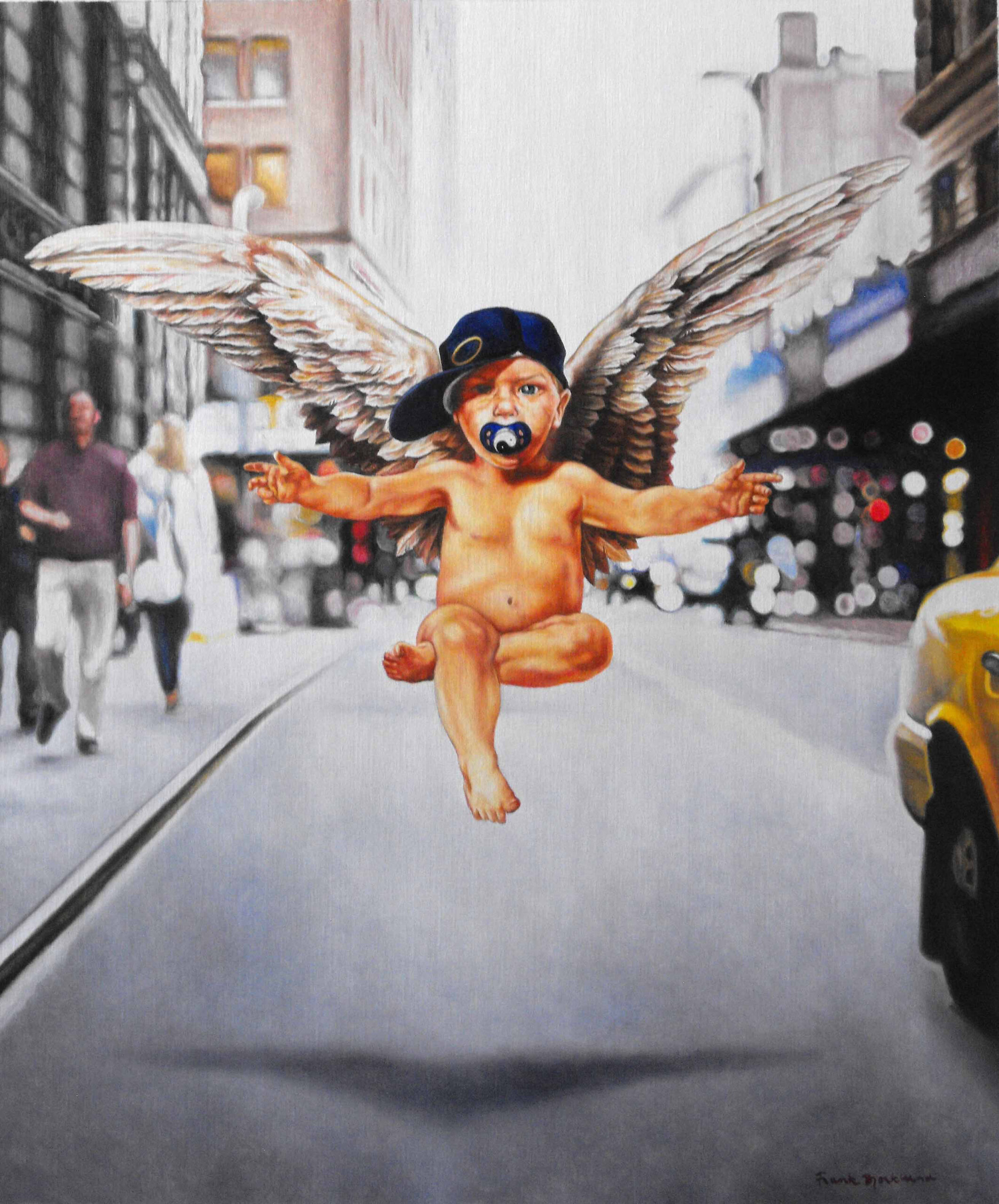
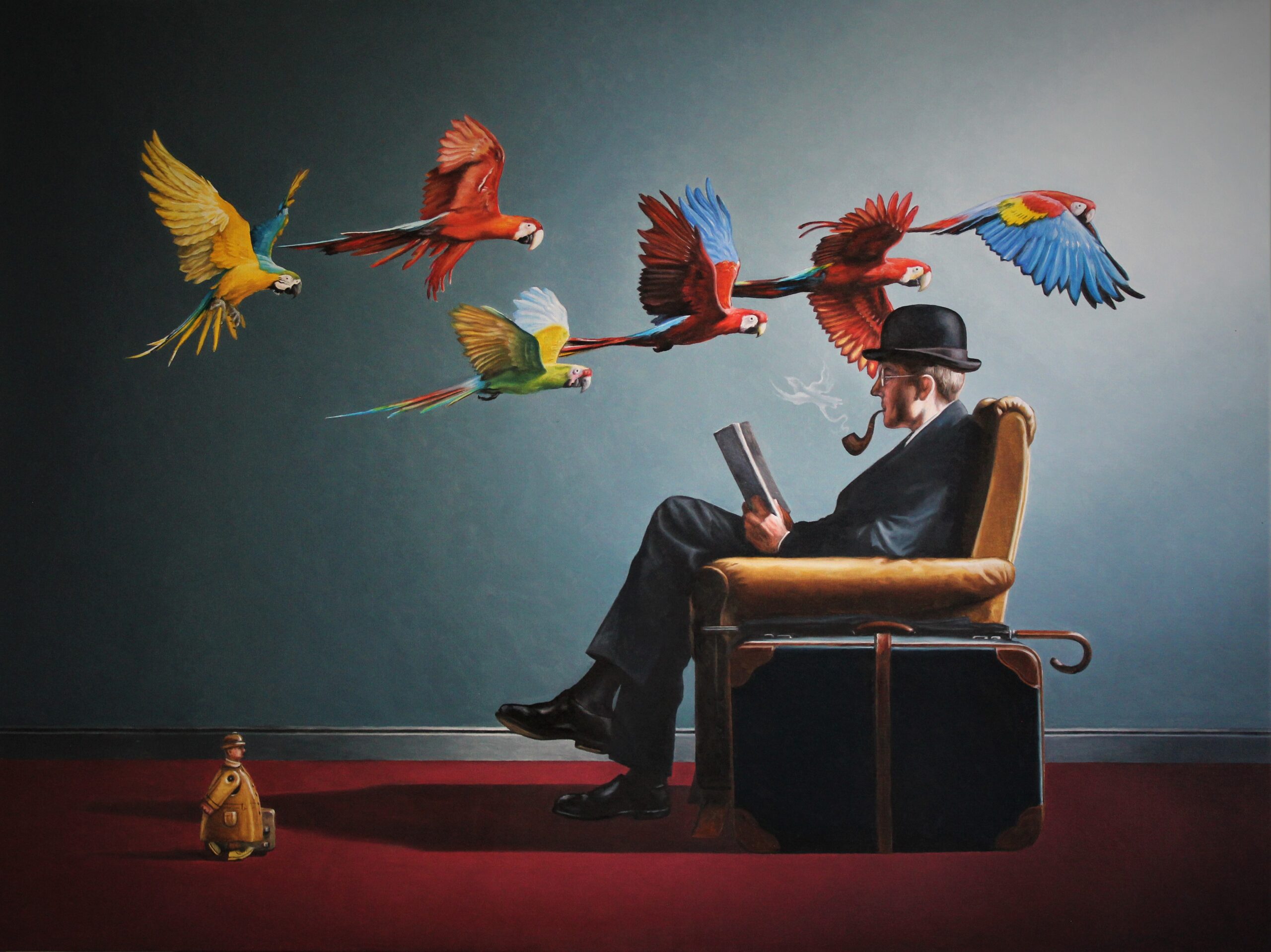
We talk about his inspirations, Frank mentions his love of comic books when he was growing up in the 60s, particularly the Adventures of Tintin series, and the Belgian surrealist painter Rene Magritte, and how he mixed these two styles. He has been painting in this way for about 10 years, alongside his black and white etchings. At first, he painted mostly with Acrylic, however in the mid-80’s he started painting mainly with oil. He describes the background of his style as realistic however the deliberation is the outlandishness of what’s being depicted. More recently his colours have become more intense which adds to the fantastical element. “There must be a reason to paint a picture,” he tells me, “at first it was just funny” but now his art has more narrative. All his ideas are written down, in no more than three sentences, no sketches. He reads around 50 books a year and explores these ideas with his artworks on canvas. Once he has a concept etched in his mind, he does some light sketching with pencil on the canvas and painting very thinly directly onto the canvas. It is really important to him for people to understand, the idea in the works, he needs the painting to ask questions to confront issues, and encourage people to think, Frank explains. He has to have an excuse to paint, if he doesn’t have an idea, he doesn’t paint. How the viewer interprets it, doesn’t matter “as long as it makes them think” he says, “As long as something is there, to discuss, it works”.
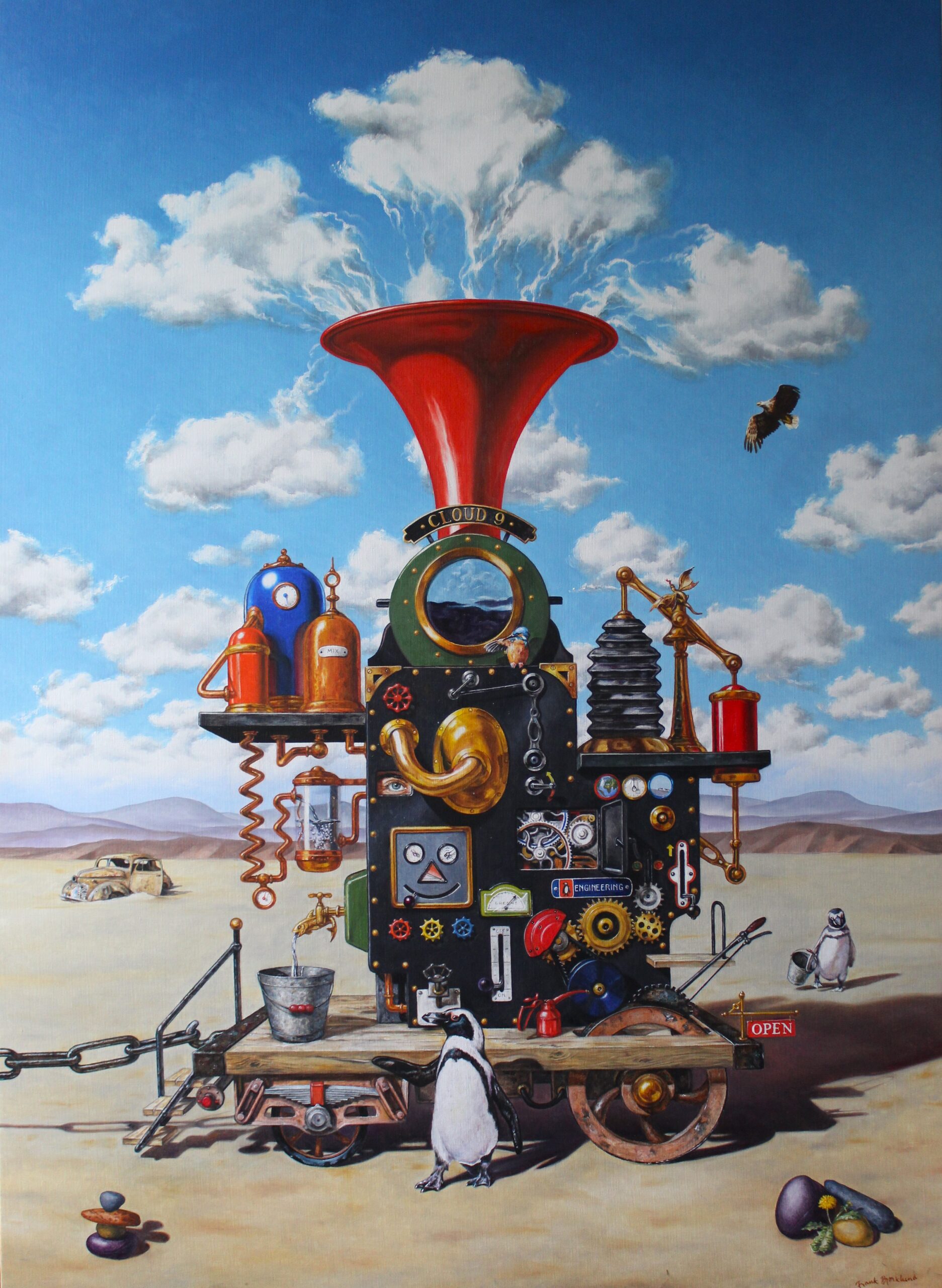
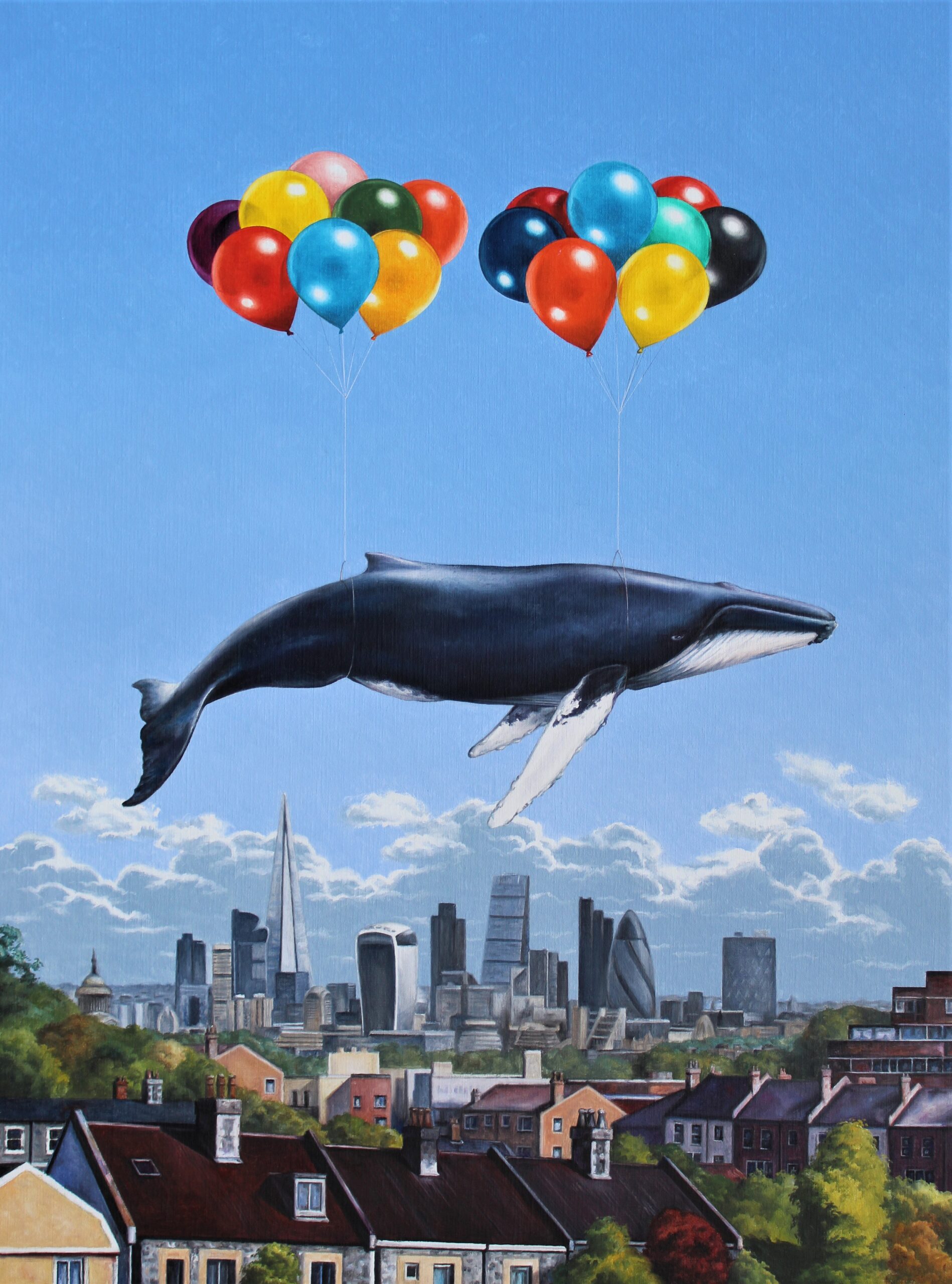
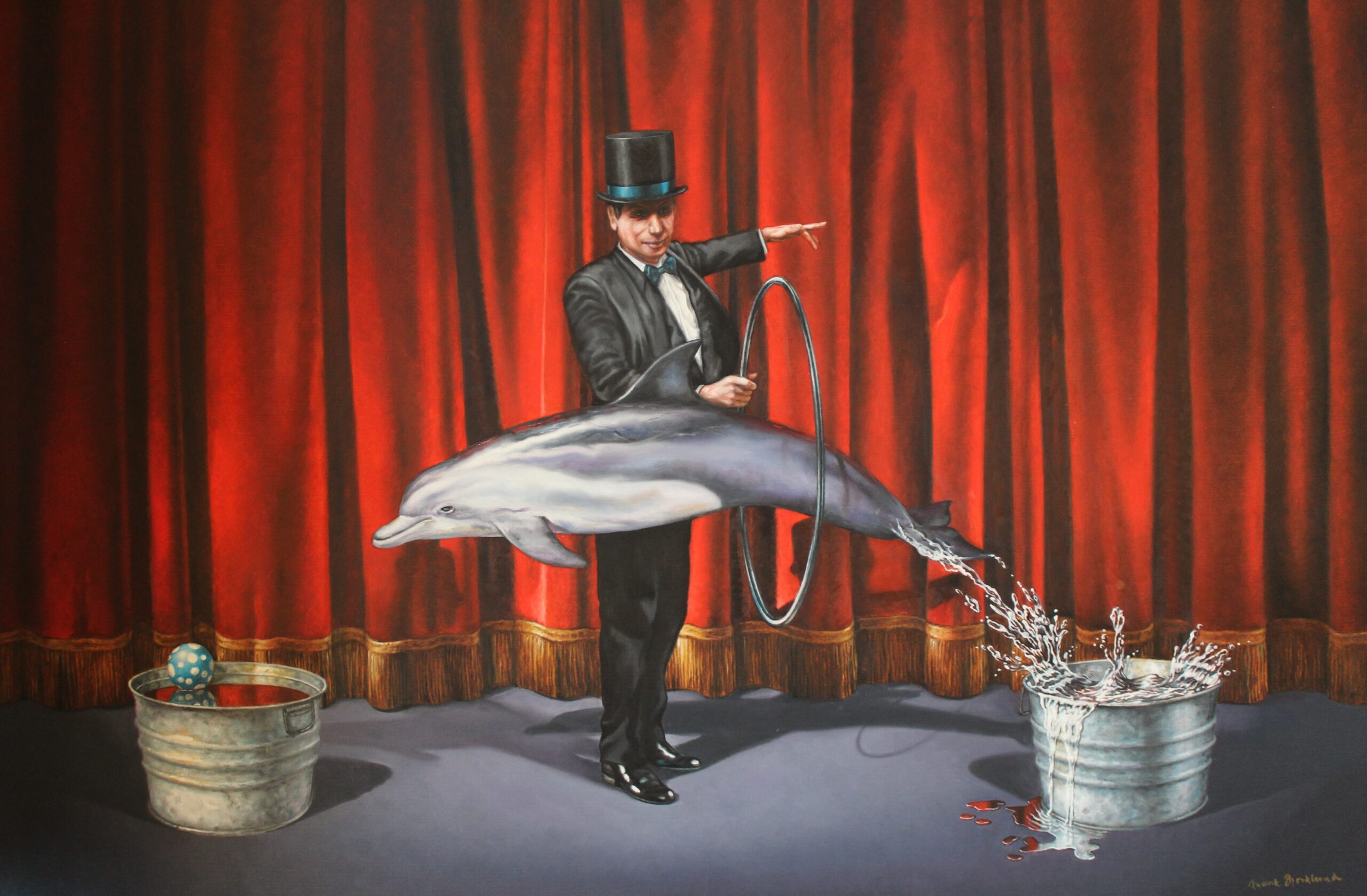
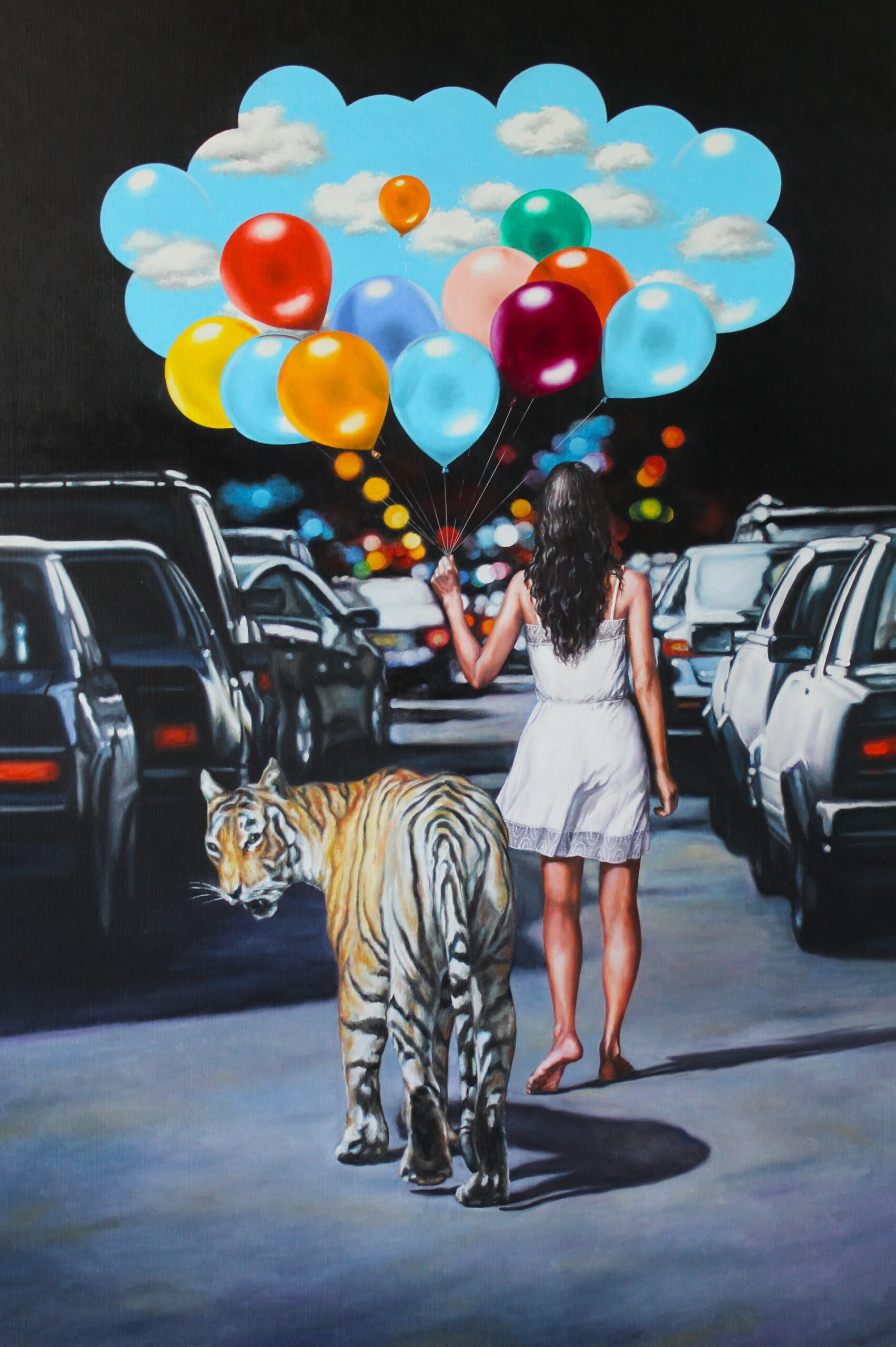
We talk about his career, and when he started, his debut was around 1983, he tells me. Although his journey is somewhat surreal in itself. He talks about growing up in a small town in the center, of Sweden, and he describes his childhood as very lucky. Frank tells me about the military service in Sweden and the laws around it, and his refusal to join the military, which is ultimately mandatory, so he had to serve prison time for a couple of months and spent much of that time sketching portraits of his inmates and selling them. He came out of prison and from then on just continued painting, he tells me, this included regular exhibitions of his artworks. Frank describes his ability to paint and draw as a natural gift, he describes his talent as his photographic memory, and his ability to translate it on paper. Frank considers himself, self-taught, although he was technically tutored when he attended art school in Sweden for one year. He studied graphics and etchings, but he emphasises he learnt to think, asking himself “Who am I?” and to express himself, to go more inside of himself to paint more honest pictures. We talk about what or who inspires his art, “Philosophy” he explains “Everything we do, the ways we relate, to the world, it’s all philosophy, it’s political, it’s a certain way of thinking”. He describes how there are certain components in his pictures that ask questions “Where do you want to go?” he says earnestly.

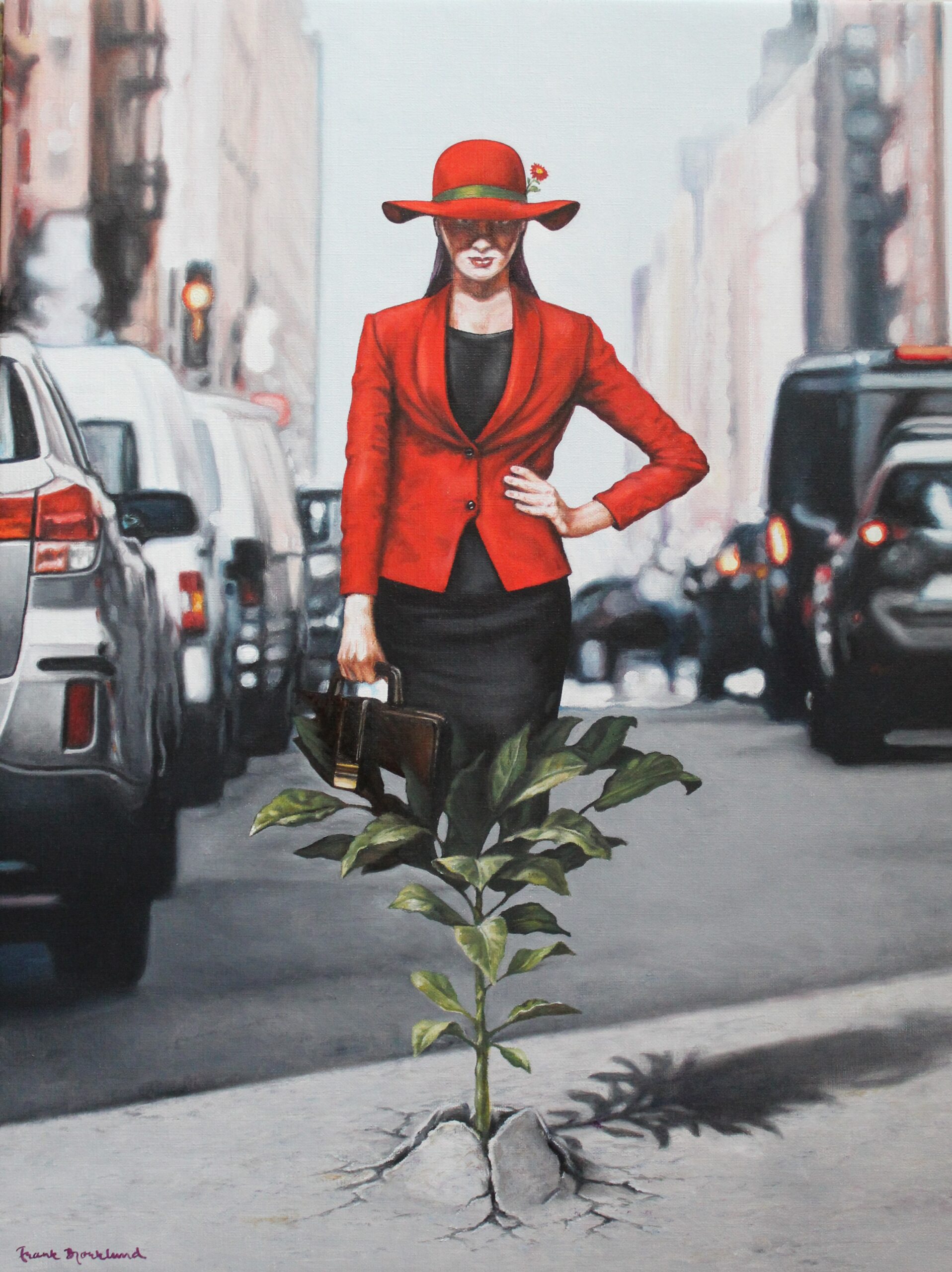
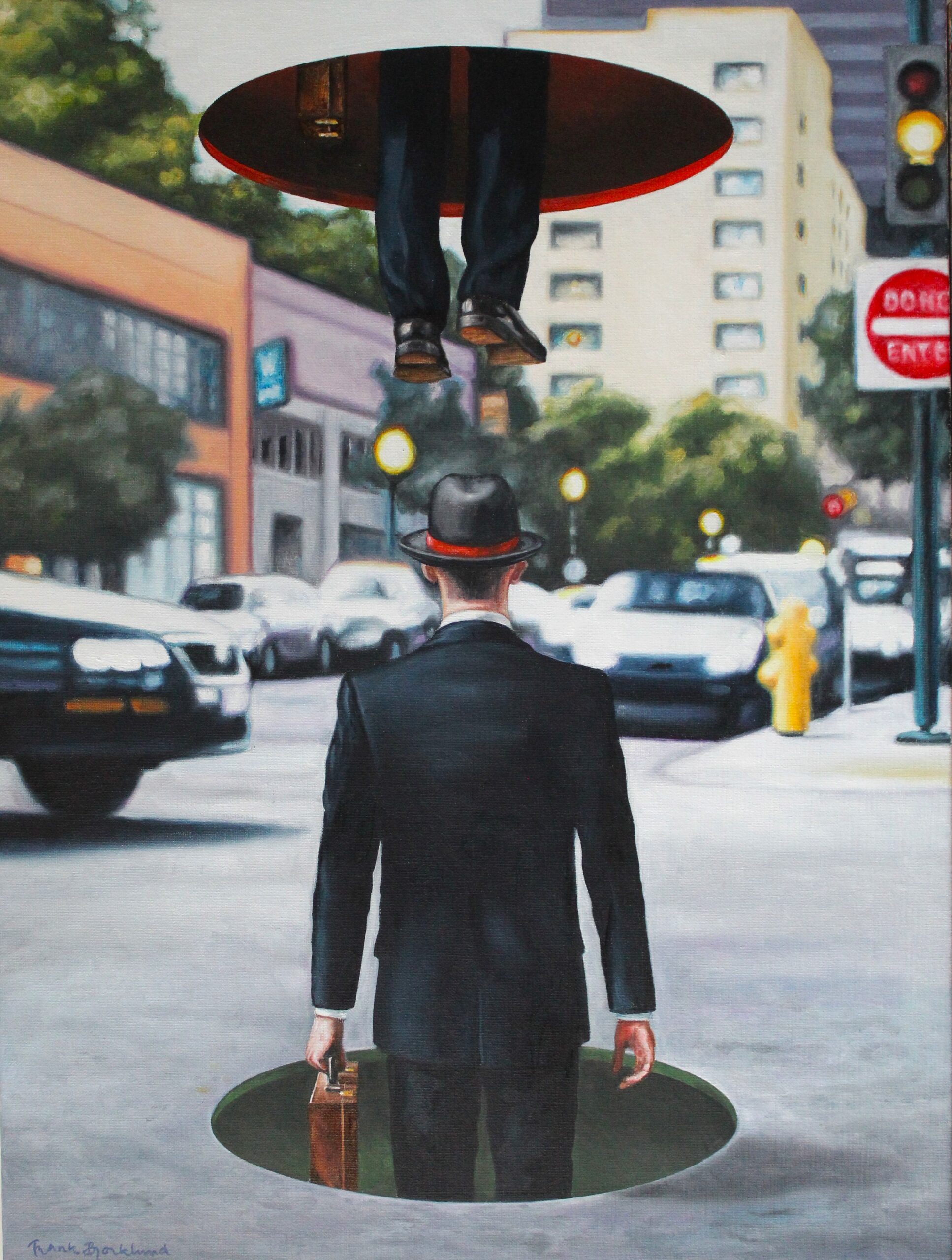

He has chosen to live in the countryside, describing the freedoms that enable him, he can listen to music as loud as he wants to, as with every choice we make there are consequences, Frank emphasises. He doesn’t like perfection, “If there is perfection there is no reason to move ahead.”We talk about the factors that allow him to love an artwork, at first Frank talks about when he was young, he loved art that just hit him in the face, it was about technique then. Now he admires Banksy and the messages he conveys, using such small and simple means, to get a point across. He compares this to the Renaissance painters, but he tries and thinks he can do that too. However it goes back to his Tintin days, his big collection of comic books, “They are masterpieces, in that they highlight emotion. Other things that highlight emotion, “Music, I go to a lot of concerts”. There are challenges in his creative process he tells me, when he gets an idea in his head he has to figure out how he can solve the painting, and how to get the meaning across. Once he had decided that, “It goes quite quickly, down to every detail, it’s a matter of days to paint then”.
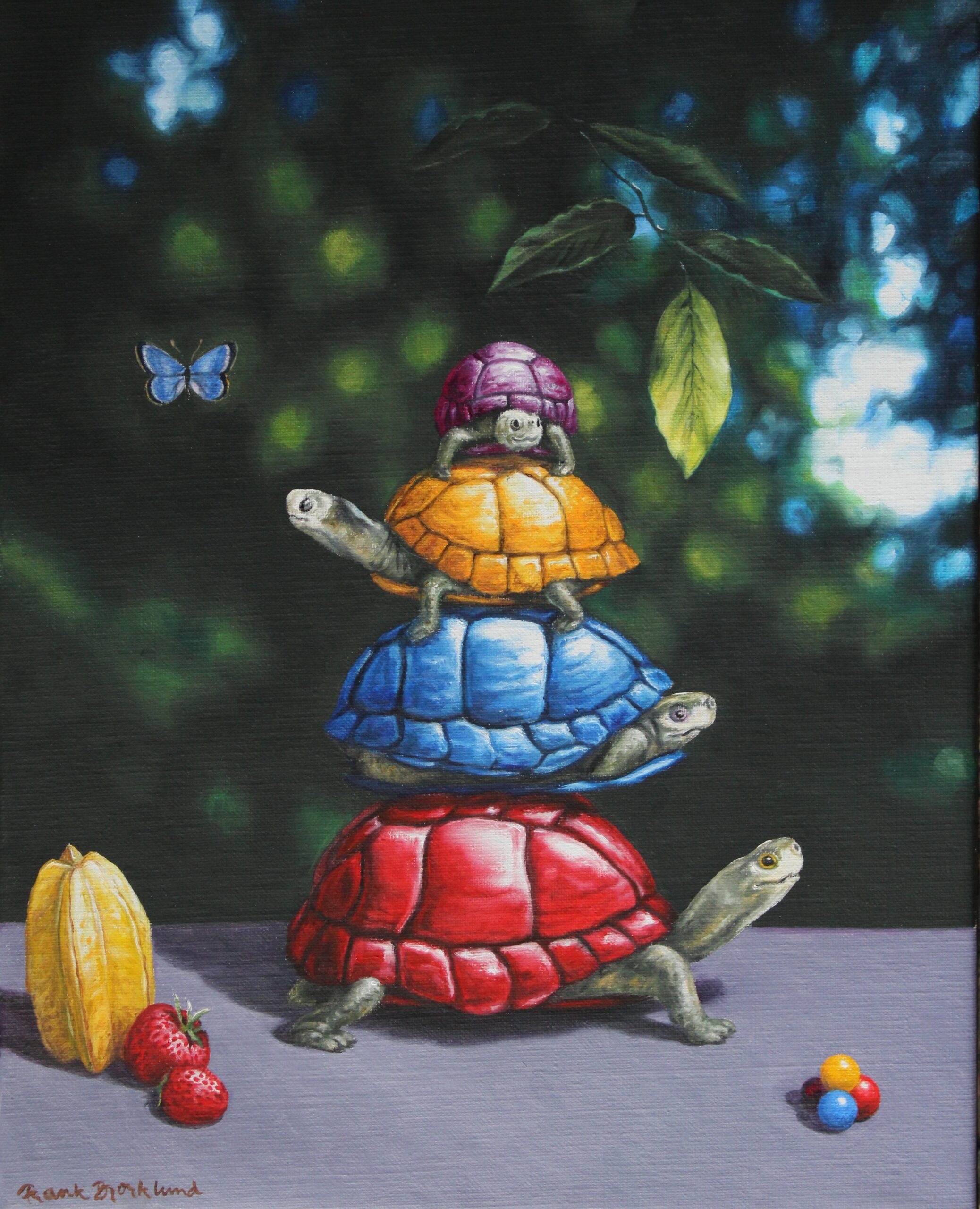
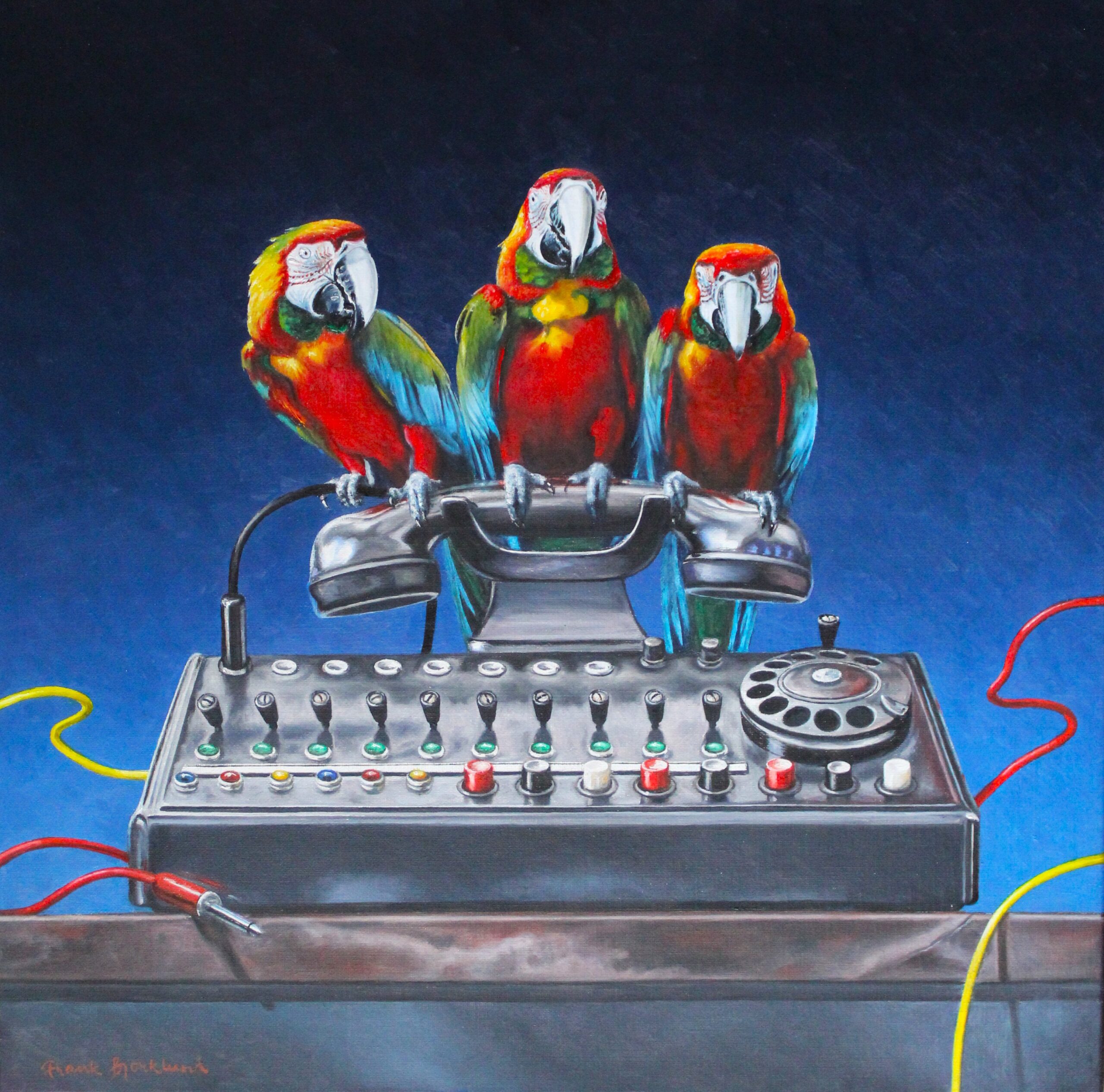
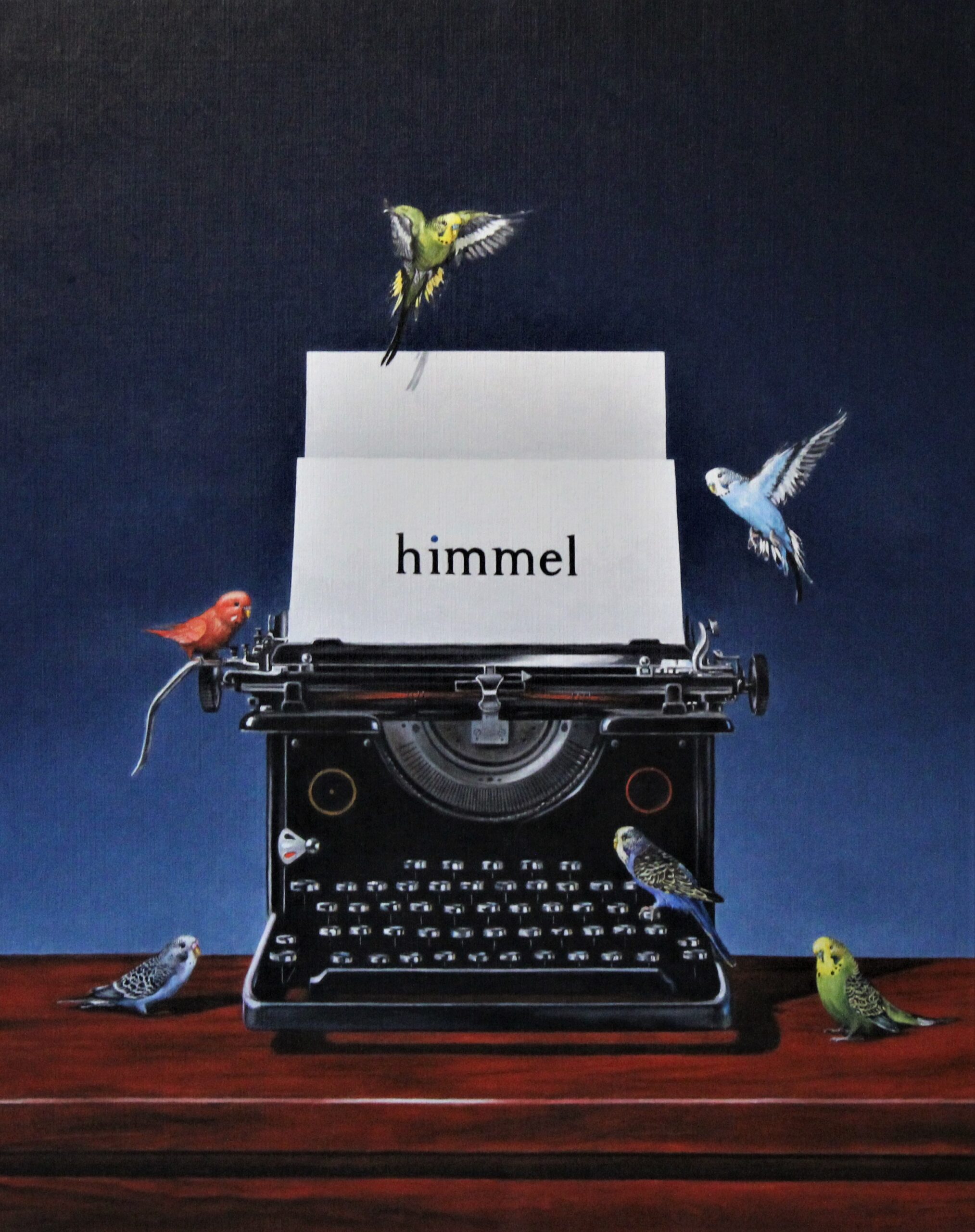
Painting is his whole life, Frank emphasises, he has been a teacher, bookbinder, truck driver, and a farmer with his parents, now his life is about his art, he paints every day from 8-5 pm. He does surprise me when he shows me his studio that he built himself, I am marvelling at this loft space with a stairwell and all white wood panelling, with attention to details, large windows to let the light in, a stairwell to the main part of his studio, little features with wooden birds embedded in the interior design. He tells me that he has built 20 houses, and how at first it was a hobby, and then he sold them. He did it for the heck of it. “I get bored very easily” He always needs change, including to vary his 40 km running course every week. His ideas, Frank explains are all over the place, for him a new painting is a new life. Amongst the paintings and the building of houses, he is involved in a non-profit land art project, which includes his huge organic sculptures, 20 of them on 120 acres of land.
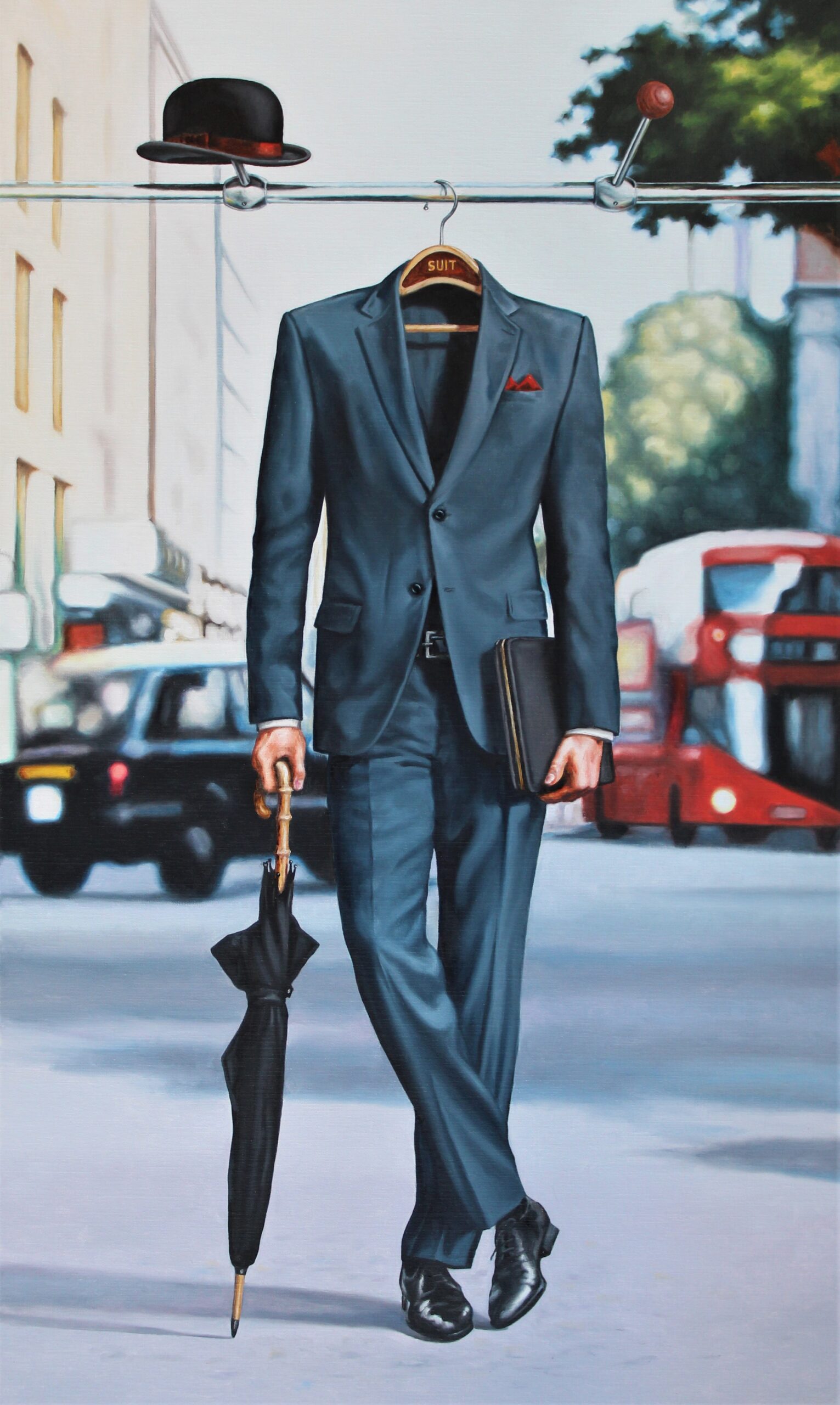
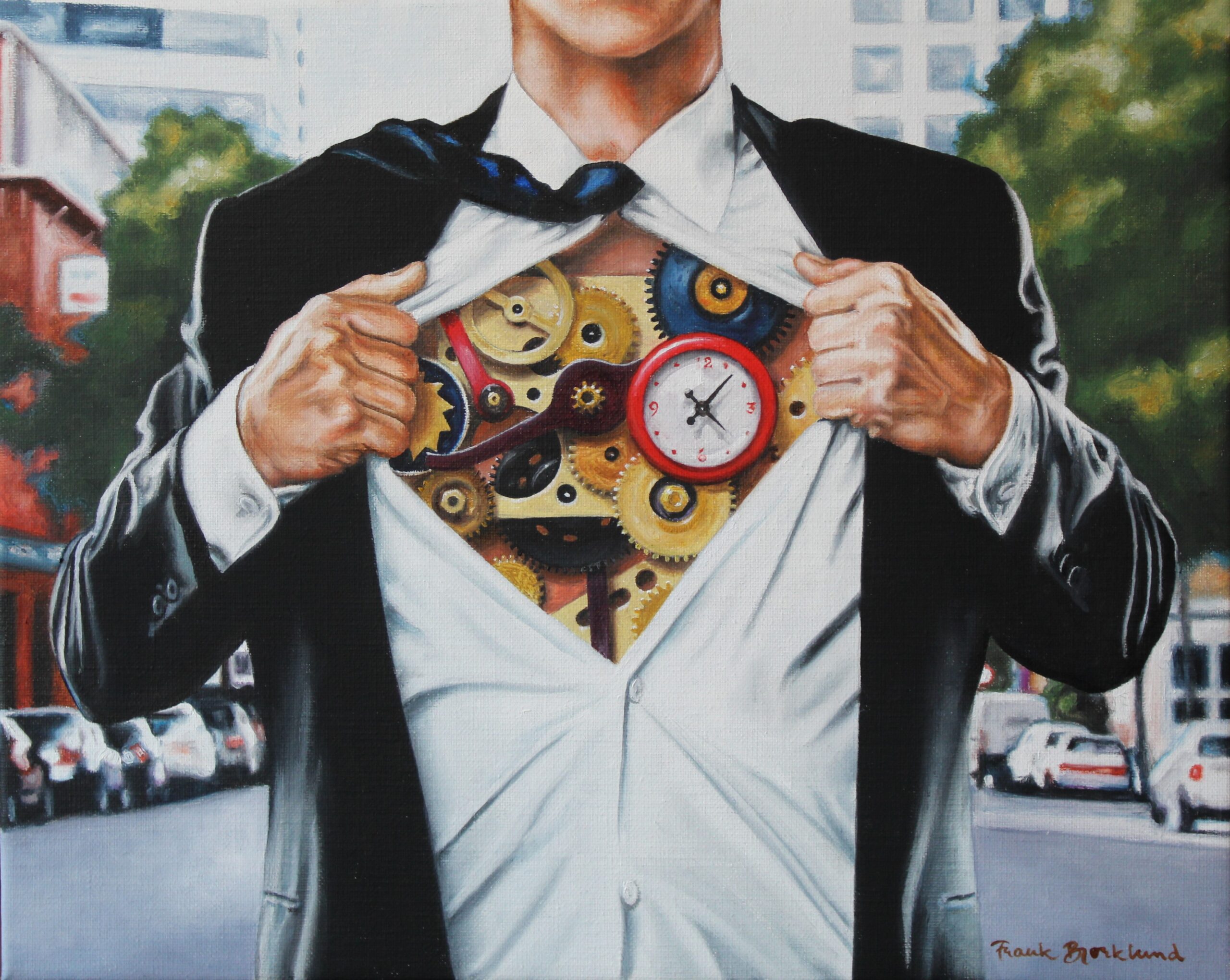
When I asked him about the best and the worst in the art world, “The best is that everybody can do it, but not everyone can live on it, but everyone can do it.” The worst part is “When you come to a certain level, you don’t discuss the painting, you discuss the economics. When you become a brand it’s all about the money”. If he could have any artwork what would it be, ‘Not to be Reproduced’ by Rene Magritte, it is presumed to be a portrait of poet Edward James.
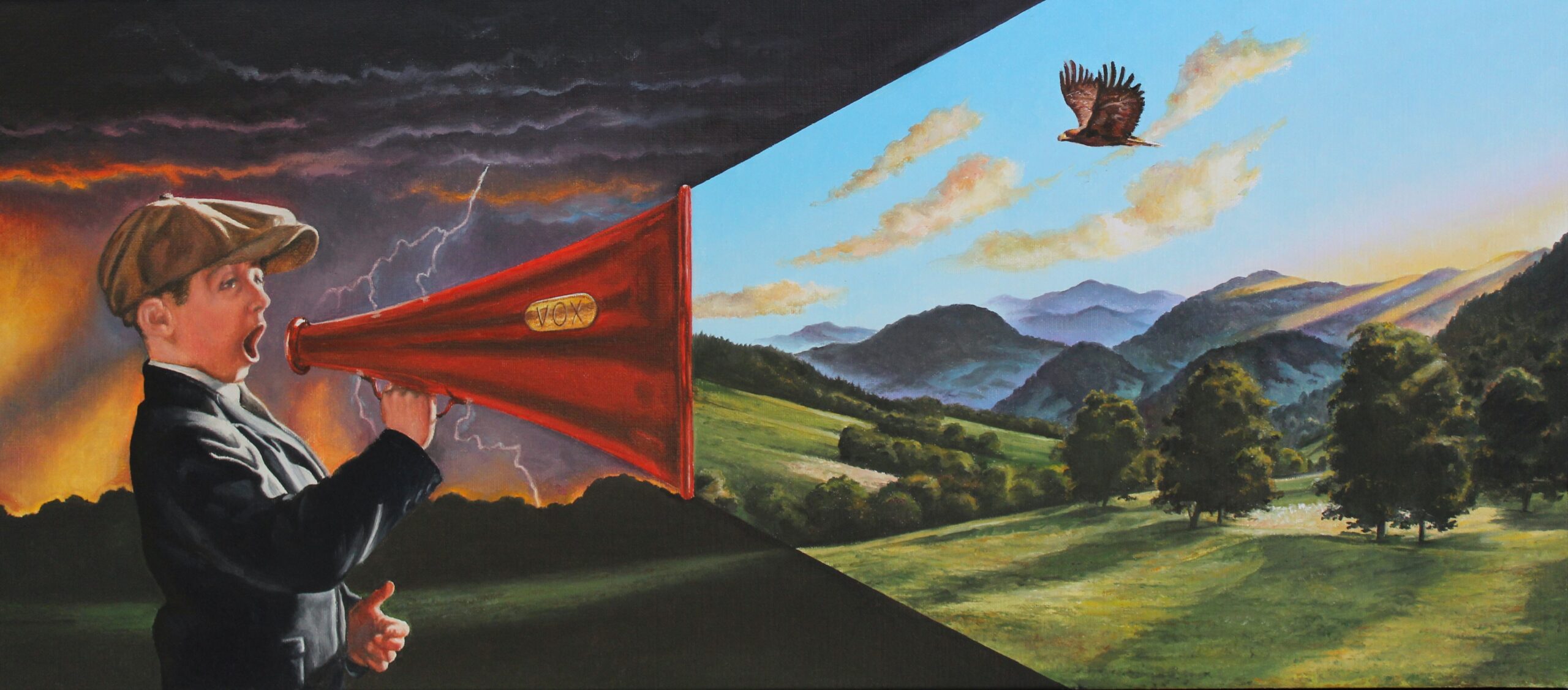
We talk about what he considers his greatest achievement, his three children, Frank tells me. He talks about how each of them is not interested in art, and how he enjoys their company and sense of humour. I asked him about his parents, and he told me his Dad asked him why he couldn’t get a proper job. He is currently working on his next solo show, 40 paintings that he has already completed.
Interview: Antoinette Haselhorst
